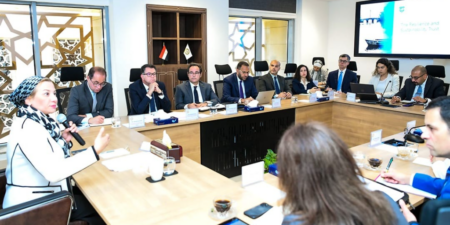In recent years, facial reconstruction technology has allowed us to come face-to-face with our ancient ancestors in a way that had never been possible before. From a 50,000-year-old geriatric Neanderthal, to a medieval man with achondroplastic dwarfism, and the ever-enigmatic “hobbit” hominid Homo floresiensis, our forebears faces can now be revealed in stark relief.
In 2022, archaeologists at the University of Bradford were loaned a set of three medieval skills by National Museums Scotland and the Dumfries and Galloway Council museums service. The skulls had been unearthed as part of an extensive project to investigate the history of Whithorn.
Known as the “cradle of Scottish Christianity”, the priory at Whithorn was an important place of worship for more than 1,000 years. Archaeological excavations at the site have revealed a veritable treasure trove of artifacts, including a carved stone dating back to the fifth century CE that is the oldest evidence of Christianity in the country.
As well as objects of religious significance, there are a number of human burials at the site. As part of the Cold Case Whithorn project, in collaboration with the Whithorn Trust, archaeologists and forensic scientists set out to reconstruct the histories of some of the area’s former residents, including the three individuals to whom the skulls belonged.
Once the skulls had been scanned, forensic artist Dr Christopher Rynn applied his considerable expertise to the task of bringing their faces to life.
“This entails the use of facial soft tissue depths, musculature sculpted individually to fit each skull, and scientific methods of the estimation of each facial feature, such as eyes, nose, mouth and ears, from skull morphology,” Dr Rynn said in a statement.
One of the skulls was that of a woman, estimated to have been in her 20s at the time of her death. In an Instagram post, Dr Rynn explained that she was likely a high-status individual since she was buried alongside a bishop, but beyond that little is known about her life.
With her was the skull of a man who had a cleft lip and palate, a split in the lip and the roof of the mouth that can occur when the tissues do not fuse properly during development in the womb. Nowadays, this can repaired through surgery, although many children will require some ongoing treatment.
Reconstructed face of a cleric with a cleft lip and palate.
Credit: Dr Chris Rynn
Rounding off our trio is Bishop Walter of Whithorn, who died in 1235. Dr Shirley Curtis-Summers, a bioarchaeologist at the University of Bradford, was able to perform stable isotope analysis on some of the burials, which revealed some more clues about Bishop Walter’s life.
“My role as a bioarchaeologist is to examine archaeological skeletons to identify indicators of disease and trauma. I also analysis human bones and teeth for stable isotope analysis, which can inform us about the types of foods people in the past were consuming, and whether they were local to their place of burial,” Dr Curtis-Summers said.
In the bishop’s case, we know that he had a penchant for fish, and that such a diet is indicative of his wealth and status. The same can be said for his elaborate burial – he was interred in a stone coffin lined with wood, complete with full clothing, his wooden crozier, and a ruby- and emerald-set gold ring.
The facial reconstructions were unveiled as part of the 2022 Wigtown Book Festival and went on to be displayed at the Whithorn Visitor Centre.
These types of reconstructions are adding a whole new layer to the already impressive amount of information that can be gleaned from archaeological finds, giving us a tantalizing glimpse into our history. After all, modern technology has made it possible to recreate our ancestors’ favorite tipples, learn about what kind of cheese they preferred, and even get an insight into the parasites that plagued them.
As Dr Curtis-Summers put it, “This project is of huge significance, because while we can never tell the full story of the lives of these medieval people, being able to reconstruct their diet, mobility, and now their faces, allows us to delve into their past and come face to face with them.”










